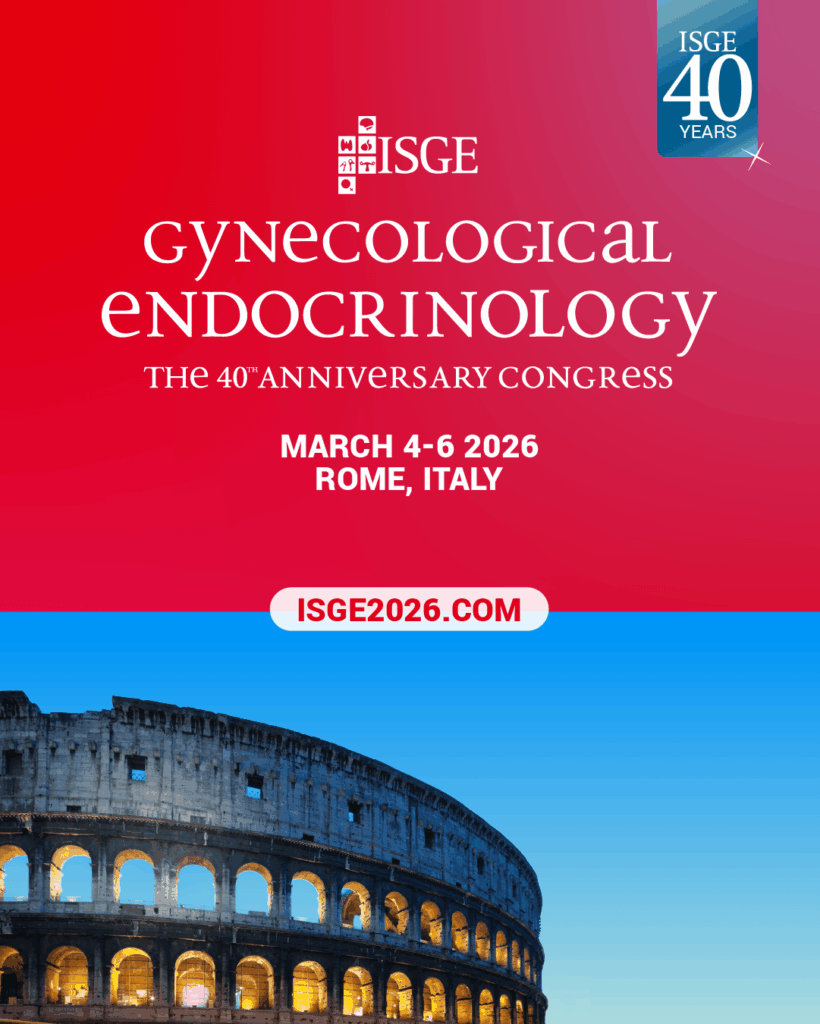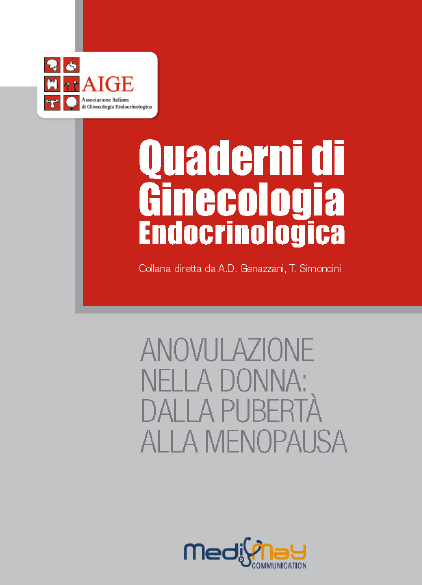-
Soumia Brakta, Justin S. Diamond, Ayman Al-Hendy, Michael P. Diamond, Sunil K. Halder
Role of vitamin D in uterine fibroid biology
Fertil Steril_ 104: 698–706, 2015
Abstract
Objective: To provide a detailed summary of current scientific knowledge on uterine fibroids (leiomyomas) in vitro and in in vivo animal models, as well as to postulate the potential role of vitamin D3 as an effective, inexpensive, safe, long-term treatment option for uterine fibroids.
Design: PubMed search articles were used to identify the most relevant studies on uterine fibroids, as well as effects of vitamin D3 on uterine fibroid cells and fibroid tumor growth in in vivo animal models.
Setting: University research laboratory.
Result(s): Despite numerous publications available on uterine fibroids, information about the role that vitamin D3 plays in the regulation of uterine fibroids is limited. Most of the recent vitamin D3–related studies on uterine fibroids were published from our group. Recent studies have demonstrated that vitamin D deficiency plays a significant role in the development of uterine fibroids. Our recent studies have demonstrated that vitamin D3 reduces leiomyoma cell proliferation in vitro and leiomyoma tumor growth in in vivo animal models. These results postulate the potential role of vitamin D3 for an effective, safe, nonsurgical medical treatment option for uterine fibroids.
Conclusion(s): This article reviews human and animal studies and uncovers new possibilities for understanding the vitamin D–based therapeutic option for an effective, safe, long-term treatment of uterine fibroids. On the basis of these results, a clinical trial with vitamin D3 or a hypocalcemic analog, paricalcitol, may be warranted for nonsurgical medical treatment of uterine fibroids.
-
Eleni A. Greenwood, Lauri A. Pasch, Kanade Shinkai, Marcelle I. Cedars, Heather G. Huddleston
Putative role for insulin resistance in depression risk in polycystic ovary syndrome
Fertil Steril 104:707–14, 2015
Abstract
Objective: To evaluate whether insulin resistance is associated with depression risk in women with polycystic ovary syndrome (PCOS), independent of other factors, including body mass index (BMI).
Design: Cross-sectional.
Setting: Tertiary university center.
Patient(s): A total of 301 women, aged 14–52 years, with PCOS by Rotterdam criteria, consecutively examined between 2006 and 2013.
Intervention(s): Complete history and physical examinations, including endovaginal ultrasounds, dermatologic assessments, completion of Beck Depression Inventory Fast Screen (BDI-FS), and serum testing.
Main Outcome Measure(s): Scores >4 on BDI-FS indicated a positive screen for depression. Scores were further subdivided into mild (5–8), moderate (9–12), and severe (>12) depression risk. Insulin resistance was assessed using the Homeostasis Model Assessment of Insulin Resistance (HOMA-IR).
Result(s): A total of 131 women (44%) were at risk for depression, determined by positive BDI-FS screening. These patients had higher BMI (32.3 vs. 28.5), and elevated insulin resistance, assessed by HOMA-IR (5.2 vs. 2.6), compared with patients with negative depression screening. In a stratified analysis by BMI category, obese women with positive depression screens had elevated HOMA-IR, compared with obese women with normal BDI-FS scores (7.4 vs. 4.1). In a multivariate logistic regression analysis, HOMA-IR was independently related to the odds of depression risk after controlling for age, ethnicity, BMI, and exercise (odds ratio: 1.07).
Conclusion(s): Depression is common in PCOS. After controlling for confounders in multivariate regression analyses, we found HOMA-IR to be significantly associated with depression risk. Our data suggest a complex interplay among insulin resistance, obesity, and depression in PCOS, warranting additional investigation. Mental health assessment is indicated in comprehensive care of patients with PCOS.
-
Anna Capozzi, Giovanni Scambia, Alfredo Pontecorvi, Stefano Lello
Hyperprolactinemia: pathophysiology and therapeutic approach
Gynecol Endocrinol, 2015; 31(7): 506–510
Abstract
Prolactin (PRL) is a hormone, mainly secreted by lactotroph cells of the anterior pituitary gland. Recent studies have shown it may also be produced by many extrapituitary cells. Its wellrecognized PRL plays an important role in lactation during pregnancy, but it is involved in other biological functions such as angiogenesis, immunoregulation and osmoregulation.
Hyperprolactinemia is a typical condition producing reproductive dysfunction in both sexes, resulting in hypogonadism, infertility and galactorrhea. It may be also asymptomatic.
Lactotroph adenomas (prolactinoma) is one of the most common cause of PRL excess, representing approximately 40% of all pituitary tumors. Several other conditions should be excluded before a clear diagnosis of hyperprolactinemia is made. Hyperprolactinemia may be secondary to pharmacological or pathological interruption of hypothalamic–pituitary dopaminergic pathways or idiopathic. Stress, renal failure or hypothyroidism are other frequent
conditions to exclude in patients with hyperprolactinemia. We will review biochemical characteristics and physiological functions of that hormone. Clinical and pharmacological approach to hyperprolactinemia will also be discussed.
-
Zeynep Ozcan Dag, Omer Oguzturk, Yuksel Isik, Yakup Turkel, Emel Bulcun
Personality profile in patients with polycystic ovary syndrome
Gynecol Endocrinol, 2015; 31(7): 540–542
Abstract
Aim: To investigate the personality traits of patients with polycystic ovary syndrome (PCOS).
Methods: Forty-nine patients with PCOS and 34 healthy controls were enrolled in the study. Psychometric evaluation was made with the Minnesota Multiphasic Personality Inventory. Additionally, Short Form-36 (SF-36) and Hospital Anxiety and Depression Scale (HADS) were also performed.
Results: Polycystic ovary syndrome patients had significantly higher absolute and clinical elevation scores on depression, hysteria, psychasthenia and hypomania compared with the controls. Patients with PCOS had lower SF-36 physical and mental health summary scores and higher HADS anxiety and depression subscale scores.
Conclusion: Polycystic ovary syndrome patients seem to have depressive, hysterical, psychasthenic and hypomanic personality traits.
-
Karinna Lattes, Mario Brassesco, Manuel Gomez, Miguel A. Checa
Low-dose growth hormone supplementation increases clinical pregnancy rate in poor responders undergoing in vitro fertilizationGynecol Endocrinol, 2015; 31(7): 565–568
Abstract
Poor ovarian response (POR) often means low success rates after in vitro fertilisation (IVF). We aim to study the impact of a low-dose growth hormone (GH) supplementation in pregnancy rates in poor responders in a prospective, self-controlled study of 64 poor responders to previous IVF cycles, who failed to achieve pregnancy and were supplemented with low-doses of GH in a subsequent cycle using the same gonadotropin dose and protocol. Our primary endpoint was the clinical pregnancy rate (CPR), considering secondary endpoints, the number
of retrieved oocytes, embryos, embryo quality and the proportion of cycles with embryo transfer. CPR in the GH group was 34.4%. Significant differences were observed for the GH group both in the number of top quality embryos (0.64 ± 0.88 versus 1.03 ± 1.17, p50.05) and cryopreserved embryos (0.3 ± 0.81 versus 0.85 ± 1.49, p50.05). This is, to our knowledge, the first clinical trial to use a low dose of GH as a supplement for IVF in POR patients. Despite this low dose, we achieved excellent success rates in patients with a very poor prognosis, at a reasonable cost and without side effects, which makes this a safe and cost-effective alternative.
-
Heidi Hakkarainen, Hanna Huopio, Henna Cederberg, Mirja Paakkonen, Raimo Voutilainen, Seppo Heinonen
Post-challenge glycemia during pregnancy as a marker of future risk of type 2 diabetes: a prospective cohort study Gynecol Endocrinol, 2015; 31(7): 573–577
Abstract
Context: In vitro fertilization (IVF) treatment is an effective therapy for infertility, but can result in
the potentially life-threatening complication, ovarian hyperstimulation syndrome (OHSS).
Objective: This study aimed to investigate whether kisspeptin-54 can be used to effectively and safely trigger oocyte maturation in women undergoing IVF treatment at high risk of developing OHSS.
Setting and Design: This was a phase 2, multi-dose, open-label, randomized clinical trial of 60 women at high risk of developing OHSS carried out during 2013–2014 at Hammersmith Hospital IVF unit, London, United Kingdom.
Intervention: Following a standard recombinant FSH/GnRH antagonist protocol, patients were
randomly assigned to receive a single injection of kisspeptin-54 to trigger oocyte maturation using an adaptive design for dose allocation (3.2 nmol/kg, n = 5; 6.4 nmol/kg, n = 20; 9.6 nmol/kg, n = 15; 12.8 nmol/kg, n_20). Oocytes were retrieved 36 h after kisspeptin-54 administration, assessed for maturation, and fertilized by intracytoplasmic sperm injection with subsequent transfer of one
or two embryos. Women were routinely screened for the development of OHSS.
MainOutcomeMeasure:Oocytematurationwasmeasuredbyoocyte yield (percentage of mature oocytes retrieved from follicles ≥ 14 mm on ultrasound). Secondary outcomes include rates of OHSS and pregnancy.
Results: Oocyte maturation occurred in 95% of women. Highest oocyte yield (121%) was observed following 12.8 nmol/kg kisspeptin-54, which was +69% (confidence interval, -16 -153%) greater than following 3.2 nmol/kg. At all doses of kisspeptin-54, biochemical pregnancy, clinical pregnancy, and live birth rates per transfer (n = 51) were 63, 53, and 45%, respectively. Highest pregnancy rates were observed following 9.6 nmol/kg kisspeptin-54 (85, 77, and 62%, respectively). No woman developed moderate, severe, or critical OHSS.
Conclusion: Kisspeptin-54 is a promising approach to effectively and safely trigger oocyte maturation in women undergoing IVF treatment at high risk of developing OHSS
-
Ali Abbara, Channa N. Jayasena, Georgios Christopoulos, Shakunthala Narayanaswamy, Chioma Izzi-Engbeaya, Gurjinder M. K. Nijher, Alexander N. Comninos, Deborah Peters, Adam Buckley, Risheka Ratnasabapathy, Julia K. Prague, Rehan Salim, Stuart A. Lavery, Stephen R. Bloom, Matyas Szigeti,
Deborah A. Ashby, Geoffrey H. Trew, Waljit S. Dhillo
Efficacy of Kisspeptin-54 to Trigger Oocyte Maturation in Women at High Risk of Ovarian Hyperstimulation Syndrome (OHSS) During In Vitro Fertilization (IVF) Therapy
J Clin Endocrinol Metab 100: 3322–3331, 2015 (download)
Abstract
Objectives: There is evidence that menopausal symptoms manifested at peri-menopause occur less fre-quently when compared to the symptoms experienced at post-menopause. The aim of this study wasto investigate this and to test the hypothesis that depressive symptomatology mediates the relationshipbetween menopausal stage and symptom frequency.Methods: This cross-sectional study included 213 women (M age = 52 years), of whom 125 were peri-and 88 post-menopausal. Measures comprised the Center for Epidemiologic Studies-Depression scale(CES-D) and the Women’s Health Questionnaire (WHQ) vasomotor symptoms and somatic symptomssubscales.Results: Multiple mediated regression analyses provided evidence that somatic symptoms and vasomotorsymptoms were less frequent at post- compared to peri-menopause, and that these differences weremediated by depressive symptomatology. Multivariate effect sizes ranged from small to moderate, andunivariate effect sizes were uniformly small with wide confidence intervals.Conclusions: The frequency of vasomotor and somatic symptoms appears to increase with depressedaffect. The management of symptoms could include interventions of a psychotherapeutic nature, whichmay offset this effect, particularly in women for whom depressive symptoms are a feature of the climac-teric syndrome. The extent to which depression and the climacteric syndrome may be causally related toone another remains unclear and longitudinal research should further examine the mechanisms of thisassociation.
-
Pekka Pinola, Terhi T. Piltonen, Johanna Puurunen, Eszter Vanky, Inger Sundström-Poromaa, Elisabet Stener-Victorin, Aimo Ruokonen, Katri Puukka, Juha S. Tapanainen, Laure C. Morin-Papunen
Androgen Profile Through Life in Women With Polycystic Ovary Syndrome: A Nordic Multicenter Collaboration Study
J Clin Endocrinol Metab 100: 3400–3407, 2015
Abstract
Context: Women with polycystic ovary syndrome (PCOS) have increased androgen secretion throughout fertile life; however, the data on the effect of menopause on hyperandrogenemia in these women are scarce. Nevertheless, large comprehensive comparative studies on age-related androgen levels in women with PCOS are lacking.
Objective: The objective of the study was to investigate the effect of age on serum androgen levels in women with PCOS and to determine cutoff values for androgens and SHBG associated with a PCOS diagnosis.
Design: This was a case-control study.
Setting: The study was conducted in five university sites in the Nordic countries.
Patients: In all, 681womenwithPCOSand230 referent women were grouped according to age into seven age groups (18 to > 50 yrs).
Interventions: There were no interventions.
Main Outcome measures: T, SHBG, free androgen index (FAI), calculated free T (cFT), androstenedione (A4), and dehydroepiandrosterone sulfate were measured.
Results: Androgen levels in women with PCOS decreased with age toward menopause. The difference between women with PCOS and the referent women narrowed and individual variation increased as they approached menopause. T levels, FAI, and cFT were significantly higher inwomen with PCOS aged 18–44 years (P < .001, adjusted for body mass index). The best predictive factors for having PCOS were cFT (≥0.40 ng/dL, odds ratio [OR] 7.90), FAI (≥2.0, OR 6.71), and A4 (≥277.94 ng/dL, OR 6.16).
Conclusions: Women with PCOS had elevated serum androgen levels also after menopause. The parameters that best predicted PCOS at all ages were cFT, A4, and FAI.






